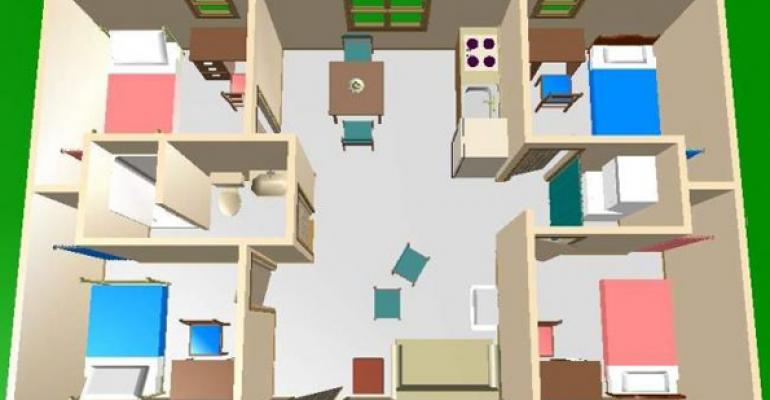Student housing investors are looking further afield in their hunt for yield—buying and developing student housing properties near smaller schools and even near community and technical colleges.
“People are getting comfortable that they can get returns in tier-3 markets,” says Dorothy Jackman, managing director of student housing services with real estate services firm Colliers International.
But investors should be wary—the reward of higher investment yields always comes with higher risks. Community colleges have suffered from declining enrollment in recent years, for example. Investors and developers should balance advantages like the availability of land or a low purchase price against the strength of the school and potentially unproven demand for student housing.
New development comes to smaller schools
“Especially during the current cycle, we’ve seen an increase in development at smaller schools,” says Gunn. Since 2011, developers have opened more than 4,400 student housing beds near 16 community and technical colleges, according to data research firm Axiometrics. Those schools include two-year colleges and four-year, for-profit institutions like Kaplan University and the University of Phoenix.
The need for housing near community and technical colleges has been relatively weak in recent years. In 2014, just 6.7 million students enrolled in two-year schools—3.65 percent less than the year before, according to the National Center for Education Statistics (2015 figures aren’t available yet).
“So if we look at the national growth figure, the negative growth seen in recent years can be partially attributed to the two-year universities and four-year, for-profit universities,” says Gunn.
Investors interested in widening their search for opportunities should also take care to assess the stability of the institution. For example, ITT Tech shut down its 130 campuses in September, leaving its 35,000 students without a degree.
Hungry investors bid high
Investors are hungry for higher yields—even if those yields are only slightly higher than the competition. The yield from student housing investments continues to fall, following the trend in the multifamily sector.
Investors accepted cap rates that averaged just 6.00 percent for student housing properties in the second quarter of 2016. That’s just 21 basis points higher than the 5.79 percent average cap rate for conventional apartment properties, according to data from New York City-based research firm Real Capital Analytics (RCA). Three years earlier, student housing properties sold at cap rates averaging 6.63 percent—46 basis points higher than conventional apartment properties.
Strong demand for student housing
Overall, demand for student housing properties is very healthy. Most properties were already at least 95 percent pre-leased as of August for the new school year beginning this fall, according to Axiometrics. In August, the percentage of student housing beds pre-leased at three-year, same-facility properties was 103 basis points lower than in the record-setting year before, but was still 70 basis points higher than the pre-leasing rate recorded in August 2014.
As of August, effective rents averaged $618 per bed nationally for fall 2016, up 2.3 percent from fall 2015. Most properties are averaging rent growth between 2.0 percent and 4.0 percent, according to Axiometrics. That’s significantly higher than the rate of inflation in the economy overall.

